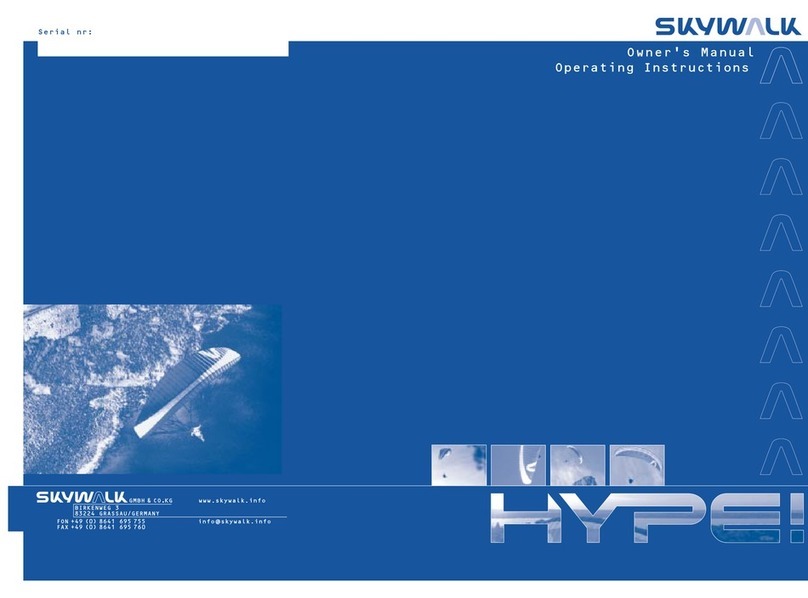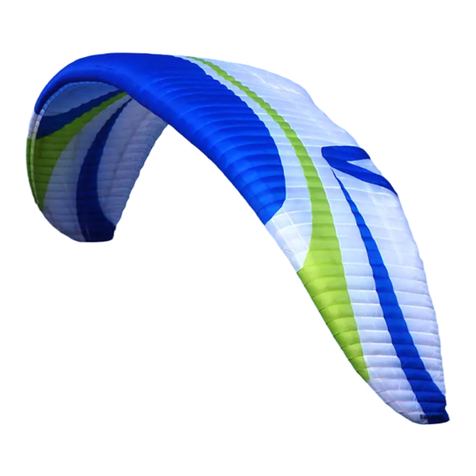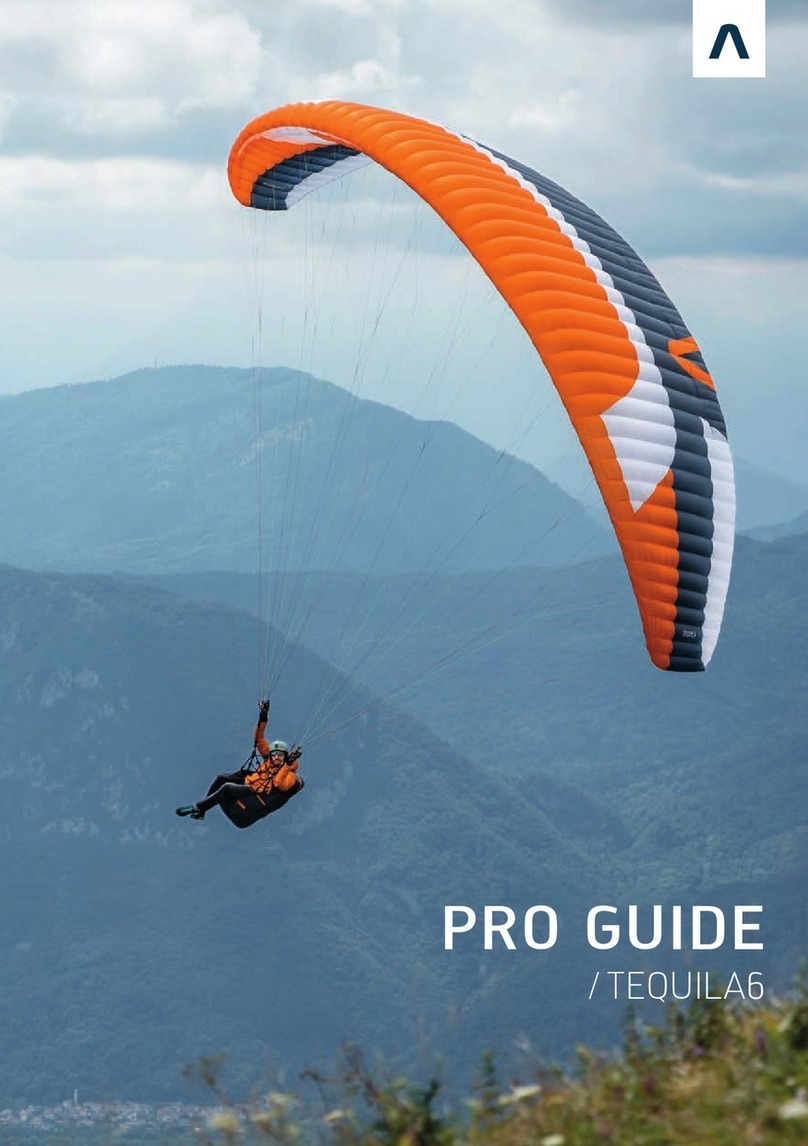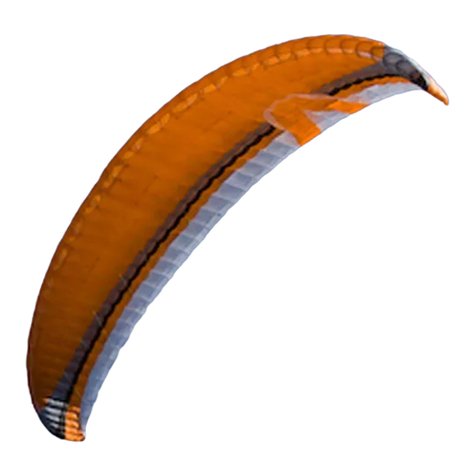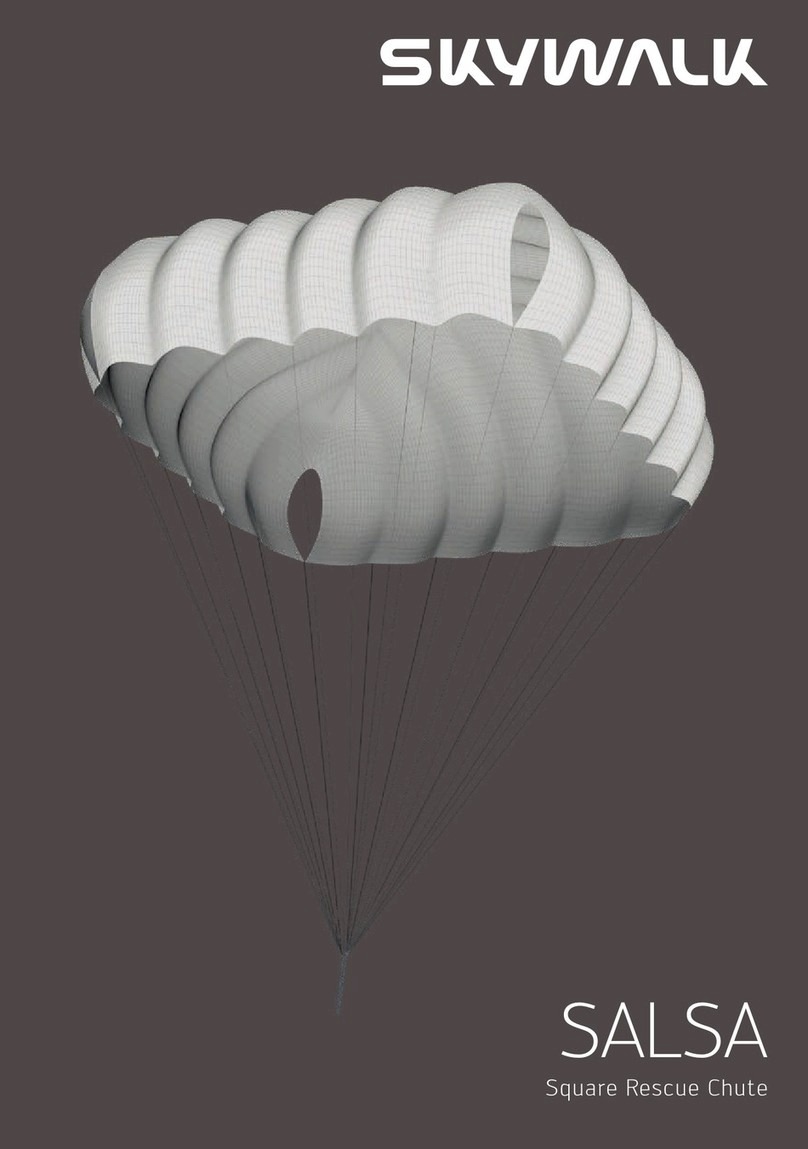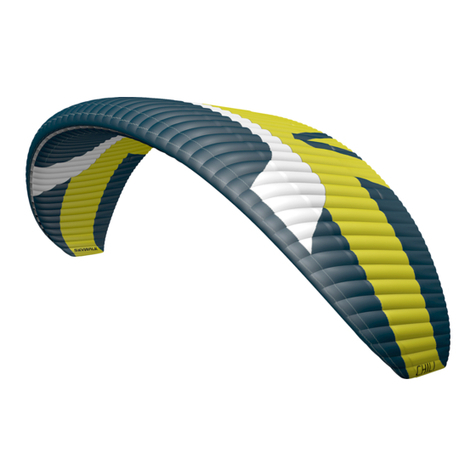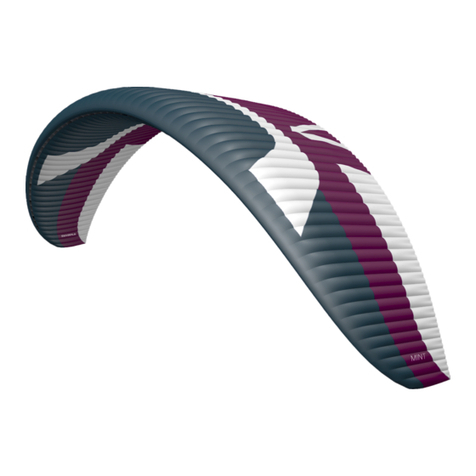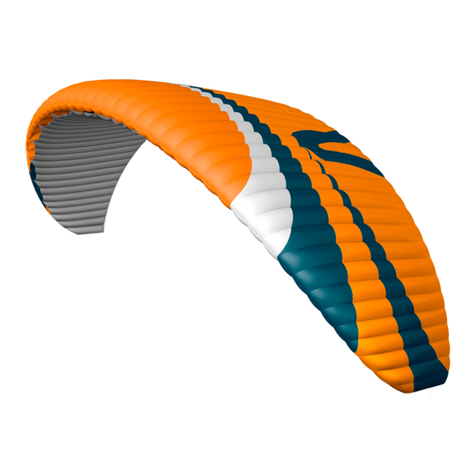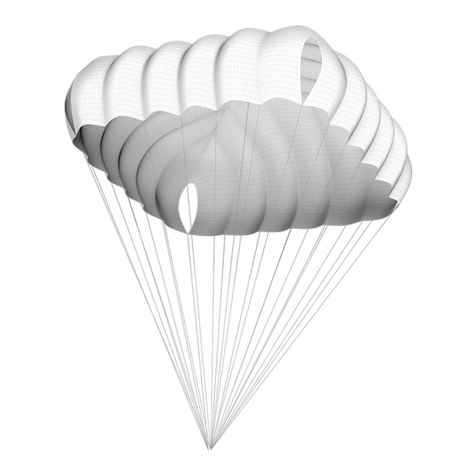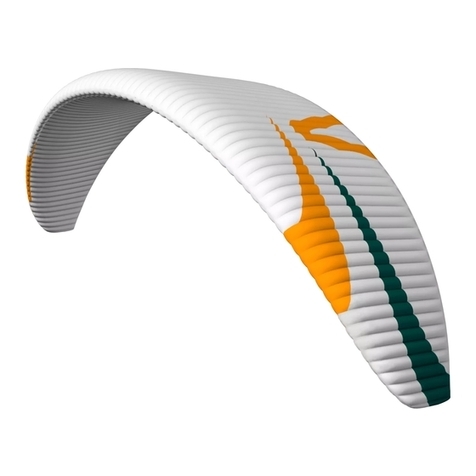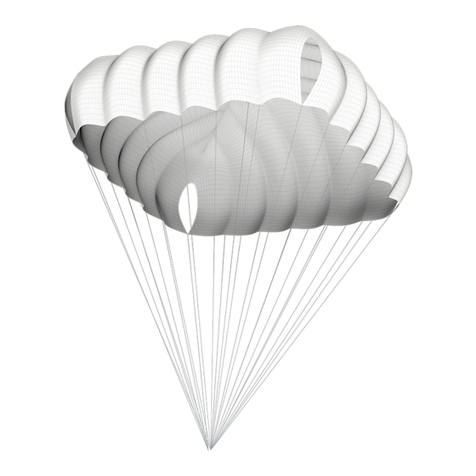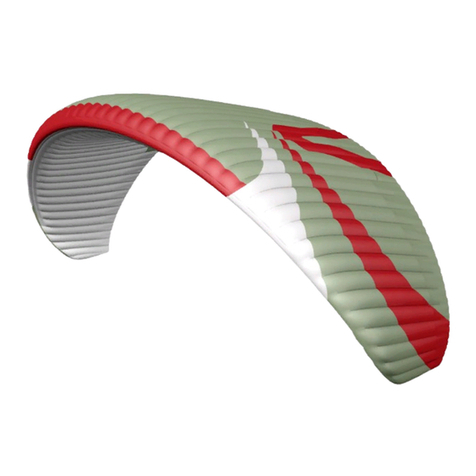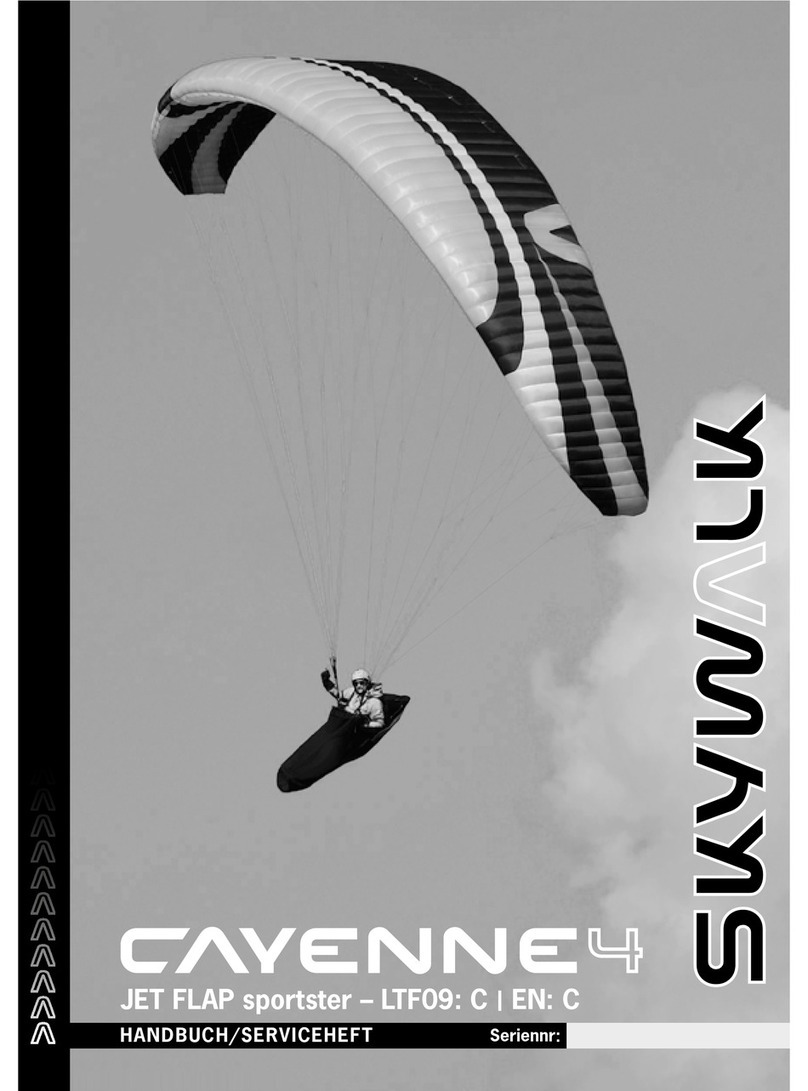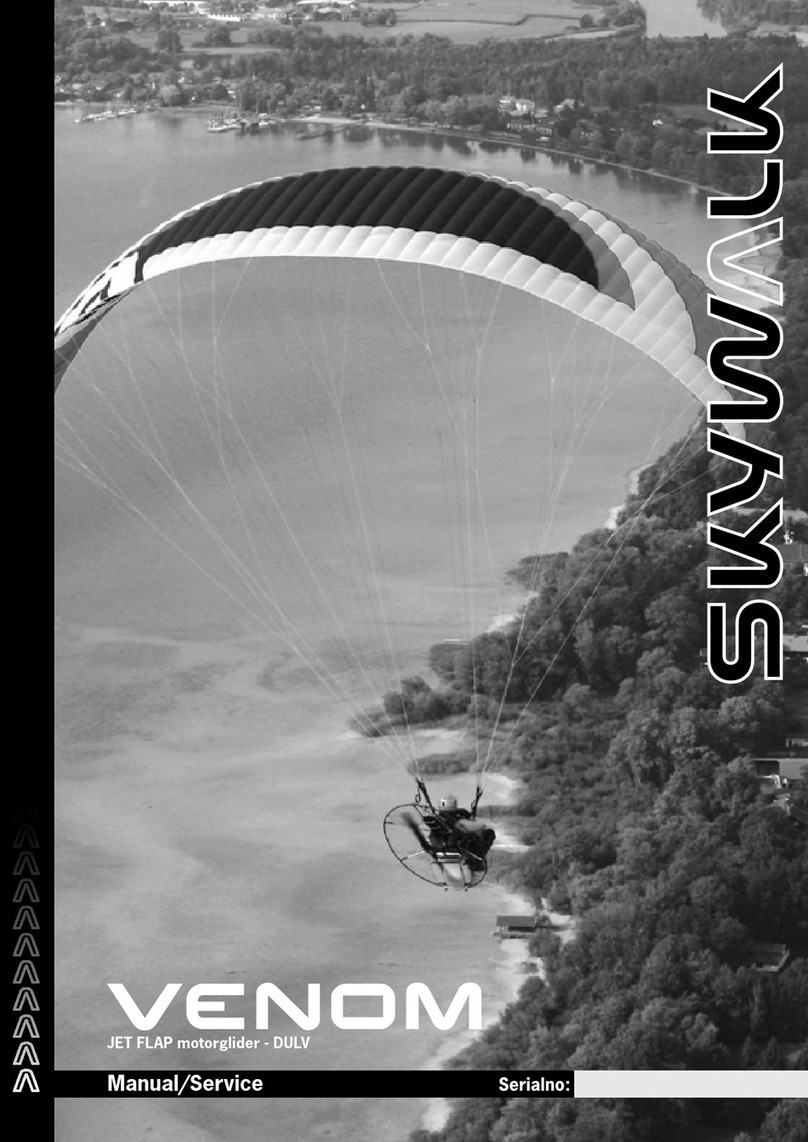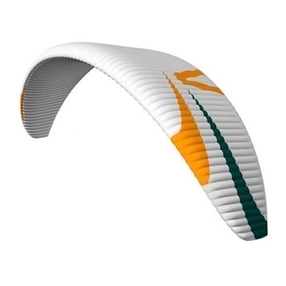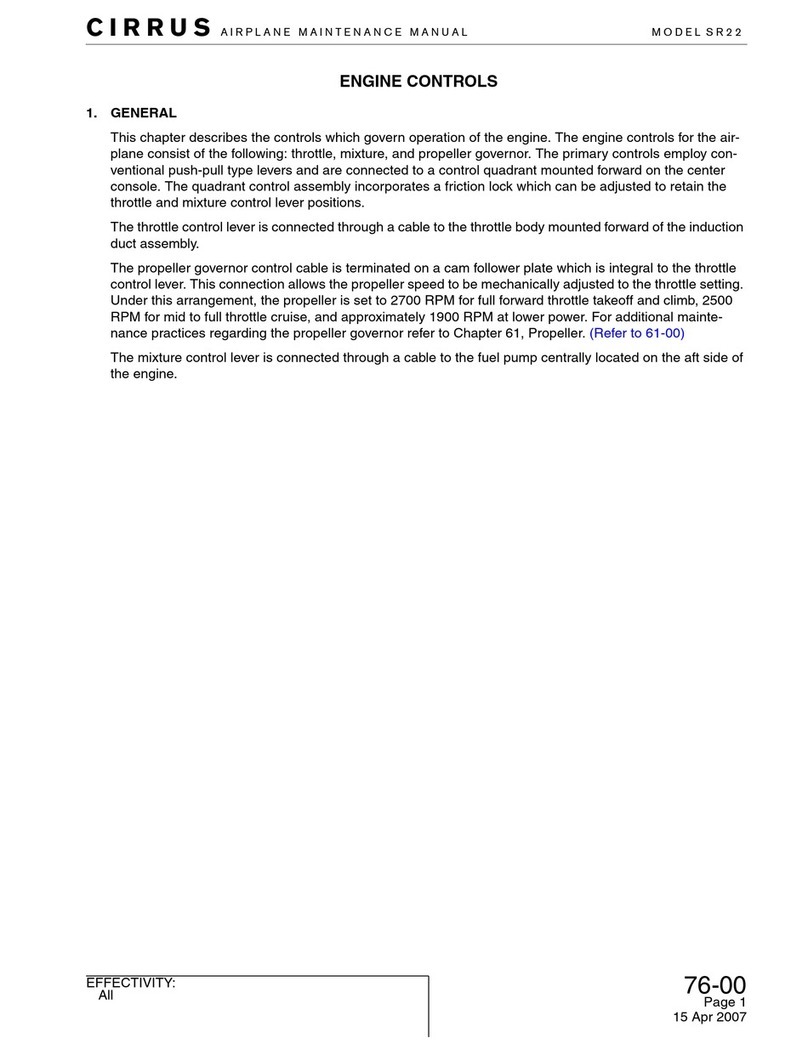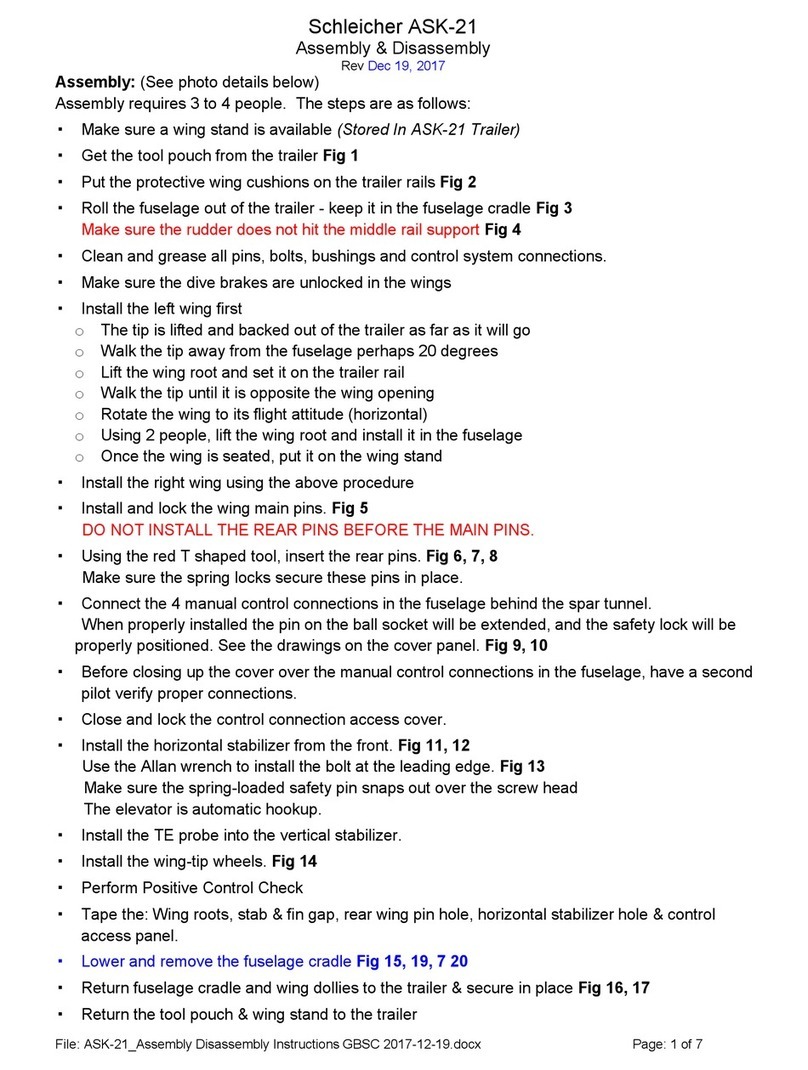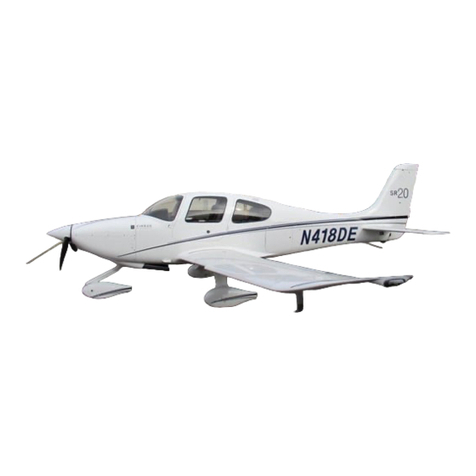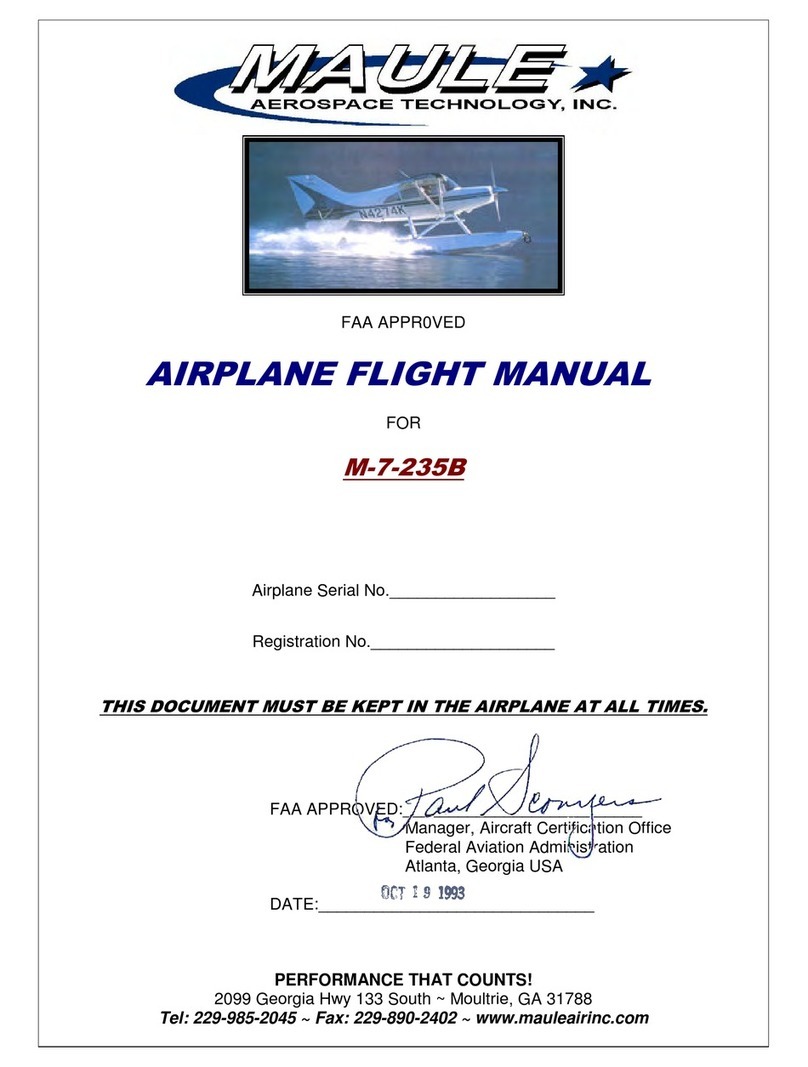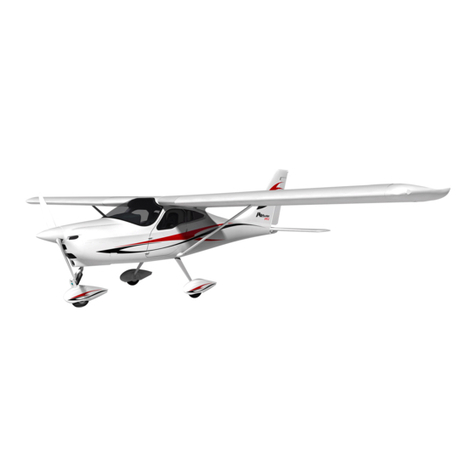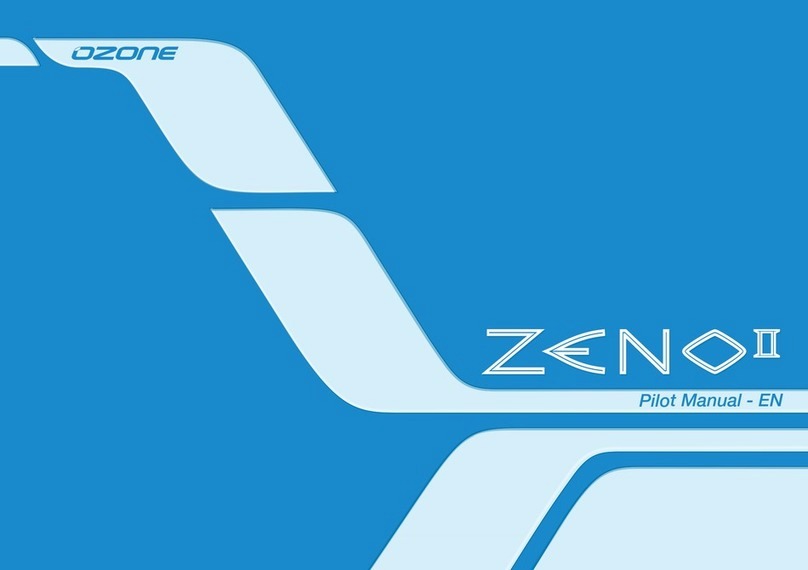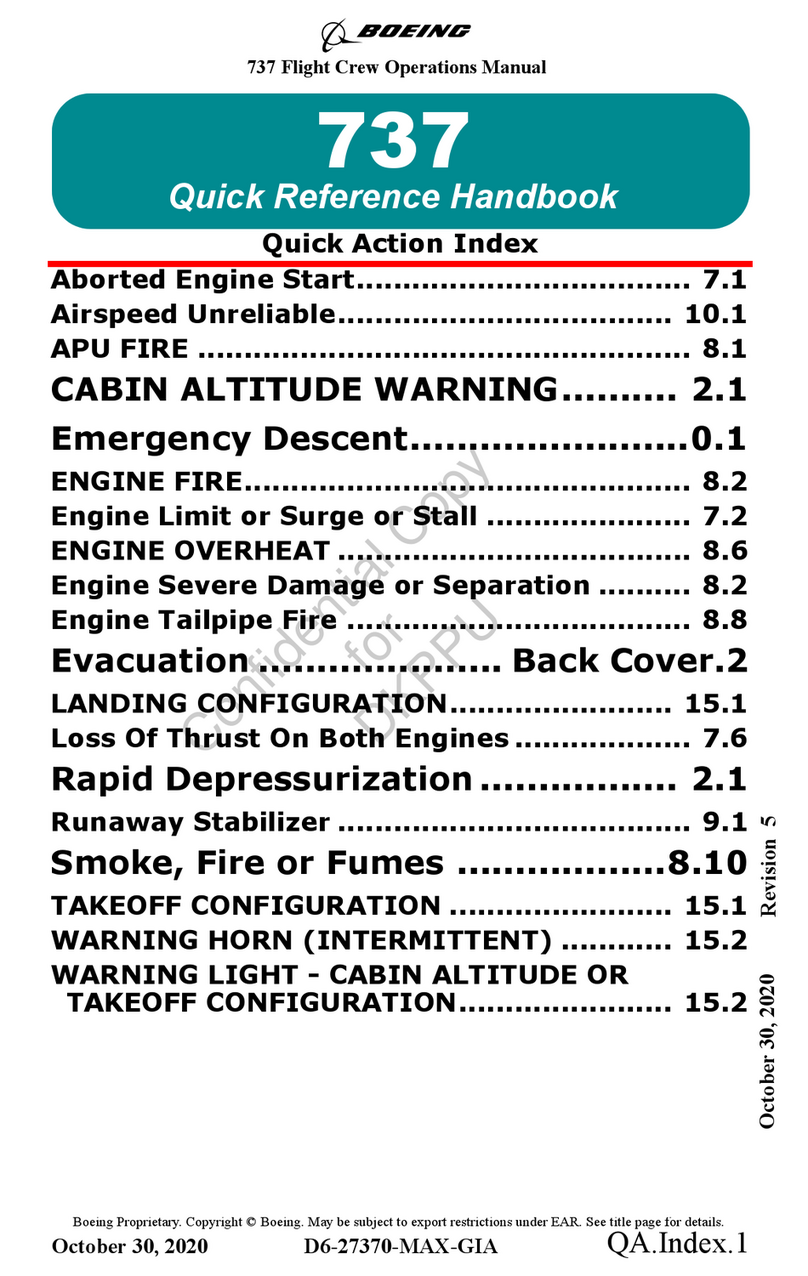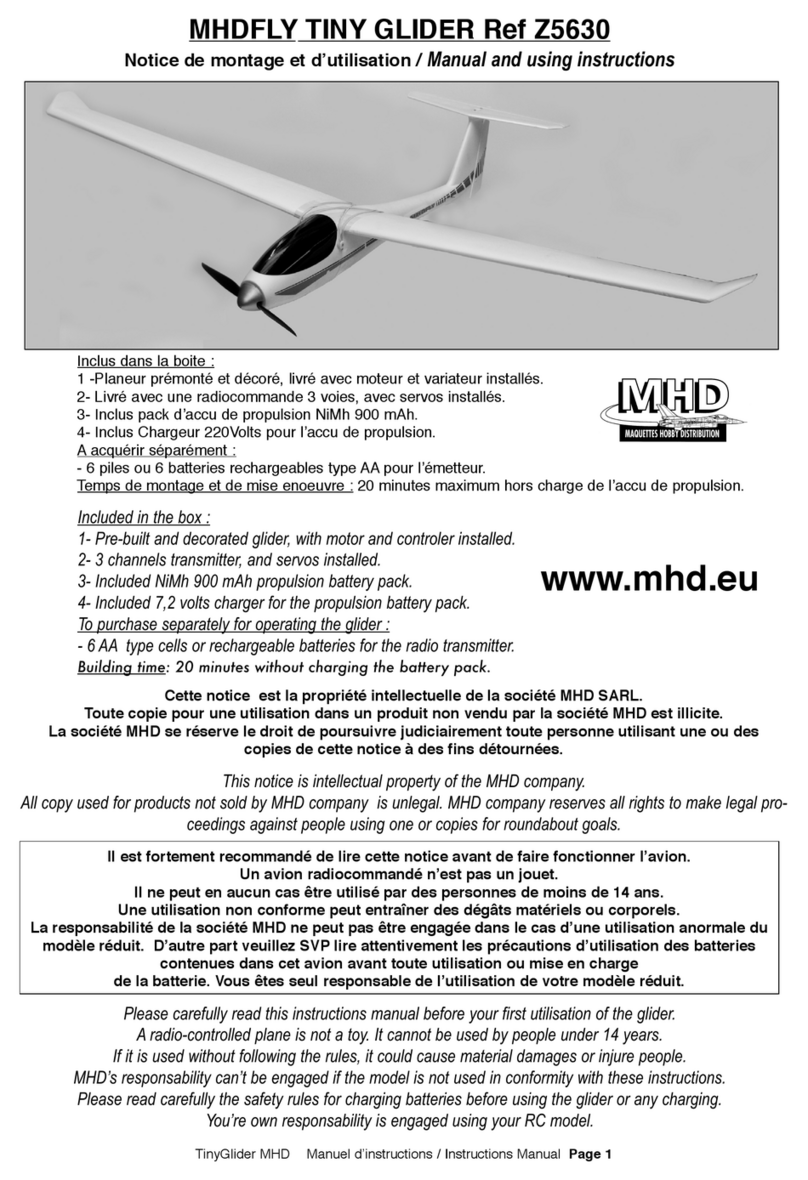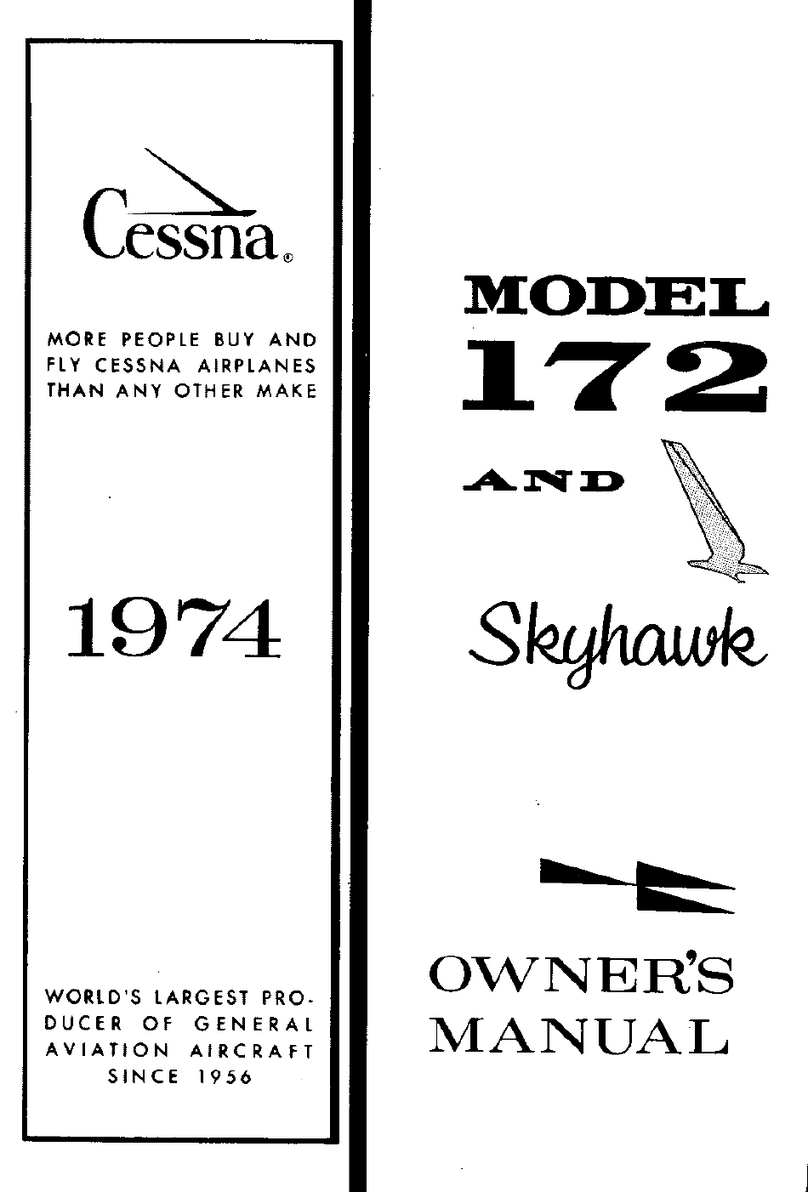
46 47
FLIGHT TECHNIQUES AND CHARACTERISTICS
PREFLIGHT CHECK AND MAINTENANCE
It is important to check all paragliding equipment thoroughly before every flight to see if
it has any defects. Also check the paraglider after long flights and after long storage.
CHECK THOROUGHLY:
> All seams of the harness, of the risers and of the reserve bridle.
> That all connecting parts, maillons and carabiners are closed.
> The brake-line knots on both sides and follow the brake-line to the top.
> All the other lines from riser to canopy.
> All the line attachment points at the canopy.
> If the top or bottom of the wing are damaged or perished.
> The ribs and crossports from inside.
DO NOT TAKE-OFF IF YOU DETECT ANY DEFECTS, EVEN IF THEY ARE MINOR!
If you find any damage or excessive wear and tear please get in touch with your
flying school.
LAYING OUT THE GLIDER:
If you use your paraglider for the first time we recommend that you practise some infla-
tions and try some simple flights at a training site. This way you are able to get used to
your skywalk MESCAL3.
Lay out the canopy so that the leading edge is slightly arched. The middle of the cano-
py should form the deepest point of the paraglider. This way the A-lines are tensioned
first in the middle whilst inflating. The paraglider inflates evenly which ensures a stable
and straight take off.
Separate A, B, C, D-lines and risers and put in order. Make sure that the brake lines run
freely through the pulleys to the trailing edge of the paraglider.
All lines have to run freely without any knots and twists from the risers to the canopy.
During flight, tied or crossed over lines can often not be released or untangled!
The brake-lines are lying directly on the ground, so please pay attention that they do
not become entangled during launch. There shouldn’t be any lines beneath the canopy
during take-off. Line-overs can have fatal consequences!
TAKE-OFF
The skywalk MESCAL3 is very easy to launch.
Hold the two A-risers and the brake handles in your hands. For a better identification,
the A-lines and covers at the A-risers are coloured red. The brake lines are coloured
yellow and the brake handles are black.
Hold your arms slightly sideways and backwards like an extension of the A-risers.
Before launching check the laid out glider. Further check the wind direction and the
airspace! Pull rapidly and the canopy of the skywalk MESCAL3 will launch and rise
above your head. The canopy will inflate fast and reliably.
Keep the paraglider straight above your head and run forward. Slow down a little as
soon as the upward pull decreases. You can open any collapsed cells by pumping the
affected side. Changes of directions that are necessary can be carried out now. Look
and feel that the wing is properly inflated.
Don’t make your final decision to accelerate or to take-off until you are absolutely
sure that the wing is properly and evenly inflated. Otherwise, stop the take-off
procedure immediately!
During reverse launches and in strong winds, it is possible that the paraglider surges
forward and inflates faster than intended. You can counteract this by running towards
the glider. We recommend practicing this demanding launch technique on a flat slope!
If you reverse launch it is advisable to only use the inside A-risers. This way the glider
opens a bit more slowly and in strong winds you don’t have to deal with the full pres-
sure at once.
The MESCAL3 is also equipped with the innovative JET FLAP System.
Air is conducted from the bottom sail (pressure area) to the top sail (low-pressure area)
and is blown out there with higher speed. The connection is established through jet
shaped channels, which are located in the rear section of the wing.
When increasing the angle-of-attack the danger of airflow interruption and subsequent
stall is minimized.
Results: the constant airflow even at great angles-of-attack delays the stall, the flyable
minimum speed is lowered and the pilot has a higher incidence range. This is of great
importance, especially during take-off and landing. Of course, the JET FLAPS are no
reason for uncontrolled braking, but the slow flight characteristics of the MESCAL3
profit immensely. You don’t need any special knowledge to have control of the flap-
system, the use of a JET FLAP paraglider is the same as a conventional glider.

